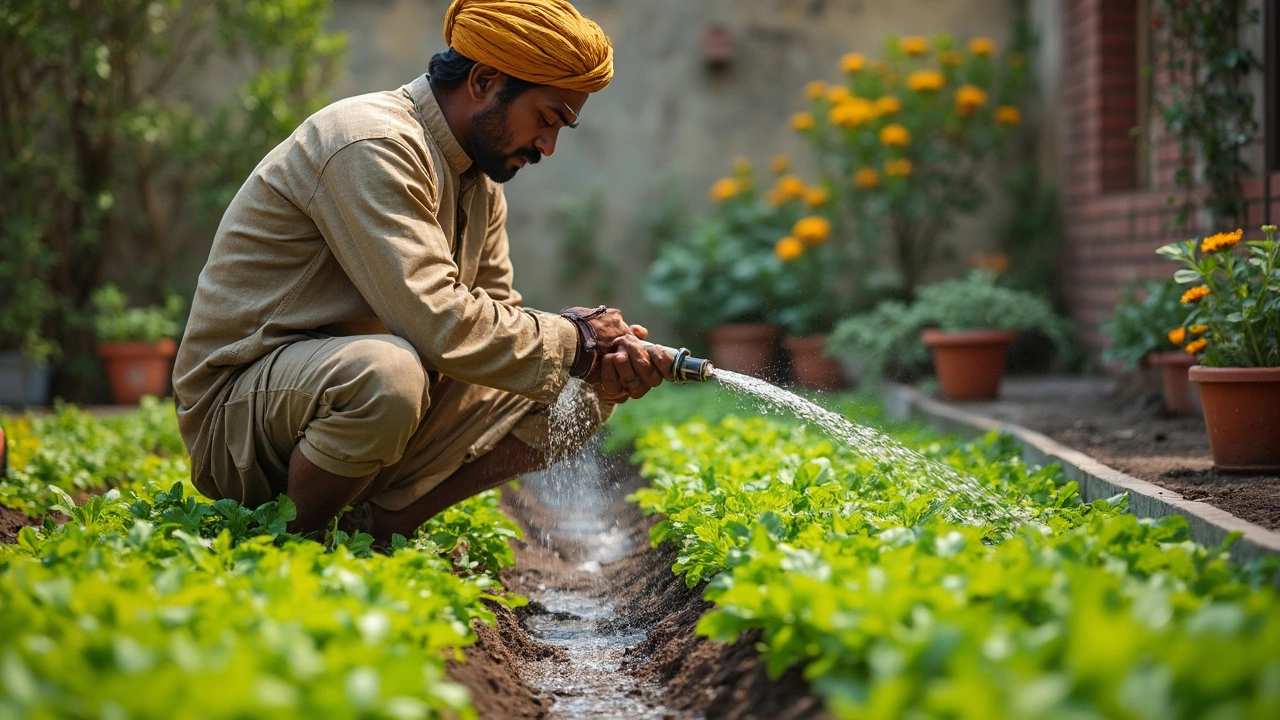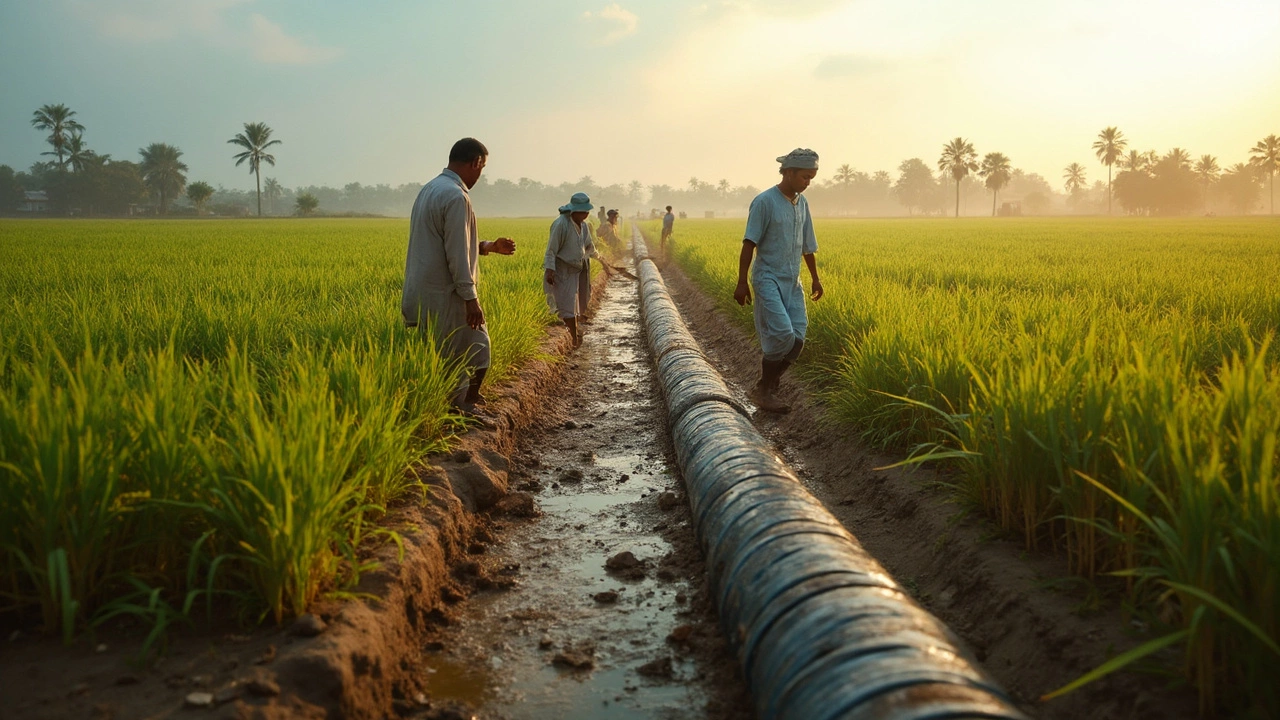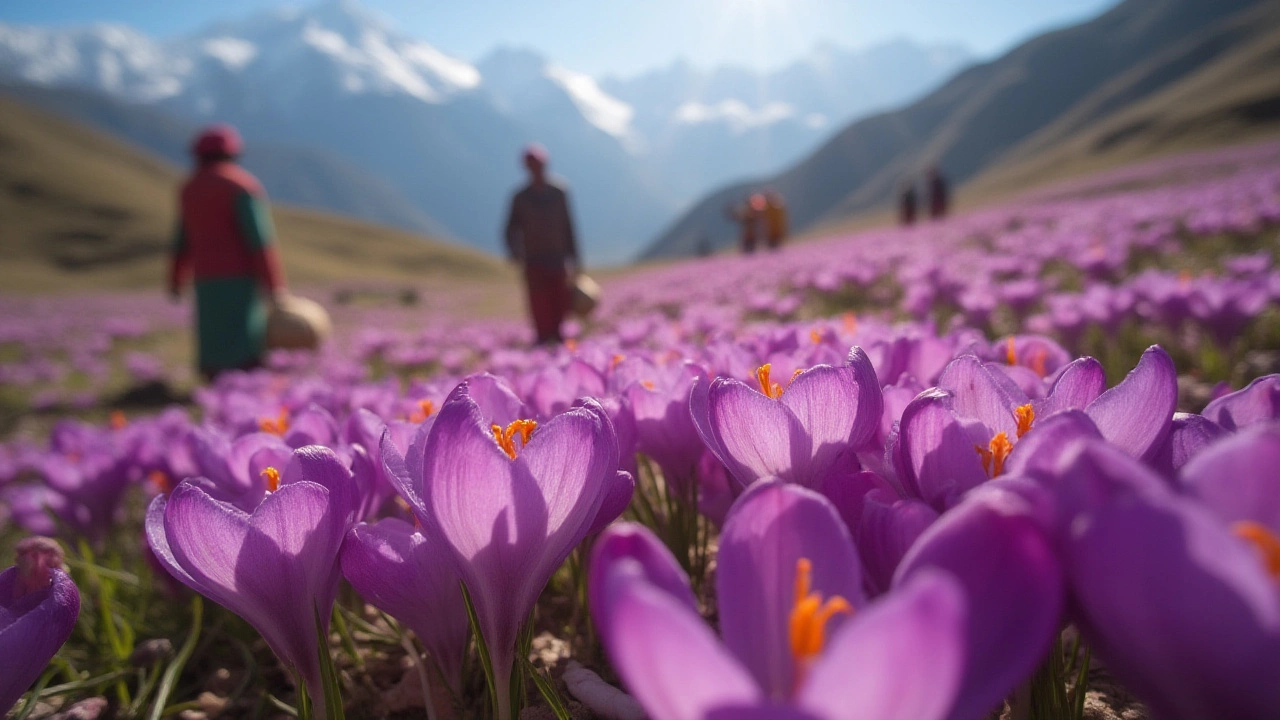How Often Do You Have to Flush a Drip Irrigation System?

If you’re using a drip irrigation system, you can’t just set it up and forget it. Those little emitters and narrow lines might look innocent, but they love to collect gunk—minerals, algae, tiny bits of soil, you name it. Suddenly, water’s dribbling out slower than a leaky faucet or not at all. Skipping a regular flush basically invites blockages, and nobody likes finding out their veggies are thirsty after they've started wilting.
You might wonder if you’re supposed to flush your system every week, once a year, or somewhere in between. It’s not a one-size-fits-all answer—stuff like your water quality and how often you run the system really matters. But here’s the deal: a bit of scheduled TLC goes a long way, and it takes less effort than you’d think. Stick around and I’ll break down the smart way to keep your lines clear, catch problems BEFORE they get ugly, and make your setup last way longer.
- Why Drip Systems Get Clogged Fast
- How Often Should You Flush It?
- What Changes for Hard Water or Dirty Sources?
- Simple Steps for Flushing (No Fancy Tools Needed)
- Telltale Signs You’re Overdue
- Pro Tips to Cut Down on Future Hassles
Why Drip Systems Get Clogged Fast
Ever notice drip irrigation lines don’t have much room for junk to pass through? We’re talking tubing as narrow as a pencil, and emitters with even smaller holes. If anything gets stuck—even a sliver of rust or a bit of algae—it’s game over for steady water flow. That’s why clogs are way more common in drip irrigation than in standard sprinklers or soaker hoses.
What actually causes the blockages? Here’s the lowdown:
- Mineral buildup: If you’ve got hard water, calcium and magnesium love to settle in drip lines, especially when the sun bakes everything dry.
- Organic gunk: Algae, bacteria, and tiny plant debris work their way into the lines, especially if you use pond or canal water (happens way faster than you’d think).
- Sand and silt: Even city water isn’t always super clean. Add a little windblown dust or a cracked pipe, and there’s grit inside your tubes.
- Bug invasions: Small spiders and ants think emitters make a cozy nest, leading to unscheduled ‘critter blockages’ no one wants to deal with.
Manufacturers did some studies and found up to 90% of stubborn clogs come from a mix of mineral and organic build-up. Here’s a quick visual on what effects are most common and where the problems start:
| Source of Clogging | How Fast It Shows Up | Common in... |
|---|---|---|
| Hard Water Minerals | 3-6 months | Suburban tap, well water |
| Algae & Bacteria | 1-2 months (with surface water) | Ponds, rivers, canals |
| Sand & Silt | Varies – anytime a filter is dirty or missing | All setups, especially older ones |
| Bugs | Random, but more in warm months | Outdoor gardens, greenhouses |
The short version: anything that can fit inside a straw can clog your drip system fast. Flushing isn’t just a “nice to have”—it’s a must. The good news? Once you know what’s likely to clog things up, you can tailor your flushes and hacks to your actual setup. Keep reading for exactly how often you need to do it based on your water and location.
How Often Should You Flush It?
There’s no magic number that works for everyone, but most pros recommend flushing a drip irrigation system at least once a month during your watering season. If you’re working with filtered water and your pipes run clean, once every 4 to 6 weeks usually cuts it. But say your water is from a well, looks cloudy, or you know it’s high in minerals—flushing every two weeks is the safer bet. Commercial growers sometimes even flush weekly, especially if their crops can’t risk a surprise block in the middle of a hot spell.
If you just fired up your system for the first time after winter, always give it a good flush before you bring the emitters online. This clears out cobwebs, dust, and anything that snuck in during downtime. Also, after any repairs or new filter installations, a quick flush stops debris from jamming lines right away.
- Main lines and laterals (the bigger pipes feeding your emitters) should always get flushed first. Just open the end caps or flush valves and let the water run clear.
- Drippers and smaller tubing tend to hold on to gunk, so check their flow after the main flush. If they sputter or look slow, they might need an extra rinse or a cleaning.
Kicking off each season with a thorough flush sets you up for fewer headaches. If you notice water pressure dropping or plants not looking hydrated, don’t wait—do a quick flush even if it’s off schedule. Sticking to a routine means fewer problems, longer system life, and way less wasted water down the road.
What Changes for Hard Water or Dirty Sources?
If your water source is loaded with minerals or has a bunch of junk floating in it, you’re dealing with a different ballgame. Hard water packs calcium and magnesium that love to crust up inside your lines. Dirty water—think pond, canal, or even a shallow well—brings in sand, silt, and organic bits that clog emitters super fast. Suddenly, flushing isn’t just a nice-to-have—it’s a must if you don’t want your system choking every month.
Let’s get specific. Regular city water might only need flushing every few weeks or once a month. But with hard or dirty water, once a week is smart, especially during the peak growing season. In some greenhouses in California, the pros even flush drip irrigation lines every 3 days when using canal water because the filters just can’t catch everything. And if your water tests over 180 mg/L of calcium carbonate, your setup is officially at high risk for mineral buildup.
Here’s a quick comparison table so you can see how water quality changes the game:
| Water Condition | Recommended Flush Frequency | Common Issues |
|---|---|---|
| Good (treated city water) | Every 2-4 weeks | Minor debris, rare clogging |
| Hard water (>180 mg/L CaCO3) | Every 5-7 days | Mineral scale, white crust in lines |
| Dirty water (pond, canal) | Every 3-7 days | Sand, silt, algae buildup |
If you suspect your water’s not great, grab a cheap test kit or get a sample checked. Flushing won’t solve everything—sometimes you’ll need better filters or even a bit of acid treatment (safe for plants) if scale builds up. But step one is flushing more often, without fail. Otherwise, you’ll be swapping out emitters and scrubbing pipes before you know it.
- If using filters, clean them out when you flush. Dirty filters make things worse.
- Watch for white crust (from hard water) or green slime (from dirty water) at the emitters. That’s your “flush me now!” warning.
- Record your flush schedule and water results. Finding a pattern helps you stay ahead of problems.
At the end of the day, if your water is sketchy, your drip system needs way more flushing than your neighbor’s city hookup. Don’t try to stretch it for weeks—your plants won’t appreciate it.

Simple Steps for Flushing (No Fancy Tools Needed)
Flushing your drip irrigation system doesn’t require a toolbox or a technical manual. In fact, it’s something you can do with just your hands and maybe a bit of patience. Keeping those tubes and emitters clean is what keeps everything else alive and thriving.
Here’s the process most backyard growers and even commercial users swear by:
- Turn off the main water supply. It’s like hitting pause on your system, so nothing’s under pressure when you start.
- Open the end caps or flush valves. Most systems have simple screw-on caps or small valves at the ends of the main and lateral lines. Just twist them open. If there are no caps, remove the last emitter on each line.
- Turn the water supply back on slowly. Let clean water push through the lines and out the open ends. You’ll usually see cloudy water, dirt, or even algae shoot out first. Run it until the water comes out clear—on average, this takes about 1-2 minutes per line, but here’s a quick table to guide you:
Line Length (meters) Flush Time (minutes) <25 1 25-50 2 >50 3-4 Remember: longer lines need more time to wash everything out.
- Close everything up. Once water runs clear, shut the end caps or reattach emitters. Make sure everything is sealed tight to avoid leaks.
- Do a quick test run. Turn the system on as usual and watch for leaks or weak spots. If a section still seems sluggish, repeat the flush there.
- If you’ve got a filter (most setups do), this is a great time to check and rinse it. Dirty filters just send junk right back into your pipes.
- Never ignore sludge or thick grime—those might mean you need to flush more often or use a filter with a tighter mesh size.
Some growers mark their next flush right on their calendar—smart move, since skipping even a month can let stuff settle and clog. If you stick to these simple steps, you’ll avoid headaches later on.
Telltale Signs You’re Overdue
Not sure if it’s flush time for your drip irrigation system? You don’t need a fancy meter or years of experience—just pay attention to a few clear warning signs. If you catch these symptoms early, you can stop minor clogs before they wreck your whole setup.
- Drip irrigation lines start gurgling, hissing, or making odd noises instead of quietly doing their job.
- Sick-looking plants in certain rows or patches, even though you’re watering like normal. Random dry spots mean some emitters could be clogged.
- Some emitters are shooting out a weak trickle, while others seem totally dead. Uneven flow is a classic red flag.
- Mud, algae, or rusty bits show up in your filter or inside the lines after you open an end cap. That’s gunk, and it never belongs in the system.
- Your main filter is clogging up faster than usual. It’s catching debris that should have been flushed through the whole setup.
- Visible leaks or bulging lines—sometimes clogging leads to pressure buildup, which can burst weak spots in pipes or fittings.
If you spot any of these, don’t wait—flush your system right away. Often, emitters will clear themselves after a solid flush, but stubborn clogs might need a little extra help (like a quick clean or replacement). Bottom line: checking your lines while your system’s running just once a month makes it easy to catch these issues early.
Pro Tips to Cut Down on Future Hassles
If you’re tired of fixing clogs and sick of uneven watering, a few easy tweaks can save you hassle with your drip irrigation system. Doing these things right now means you’ll spend waaay less time troubleshooting later.
- Add Filters (and Actually Clean Them): Start with a proper filter at the water source, even if your water looks clean. A 120-mesh filter usually works for most drip systems. Pop it open every couple of weeks—especially during the dusty season—and rinse out the grime.
- Flush Main and Sub-Mains, Not Just Laterals: Most folks only flush the little lines, but junk builds up in the bigger pipes too. Open the flush valves (or unscrew end caps) on larger pipes every few months, more often if your water’s sketchy.
- Use a Pressure Regulator: Drip lines hate high pressure. If you don’t have a pressure regulator, do yourself a favor and install one—your emitters will last longer and clog less.
- Don’t Ignore Slow Spots: If a plant looks thirsty and others nearby are booming, check that emitter right away. Replace stubborn clogs instead of wasting time poking them with a pin.
- Keep Lines Out of Direct Sun (When Possible): UV light breaks down plastic and can help algae grow. Bury those lines a couple inches deep or mulch over them—your system will last a few extra seasons, no lie.
One last thing: set a simple reminder on your phone for flushing and filter checks. It beats having to dig up lines or redo your whole setup later. Stay ahead, and your drip system will just work—no sweat.





